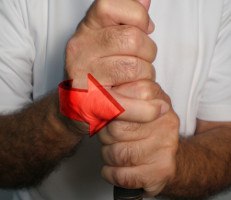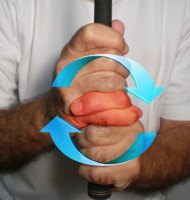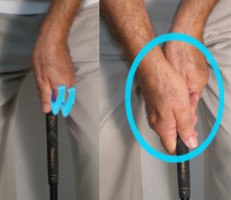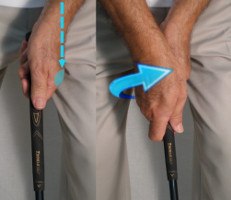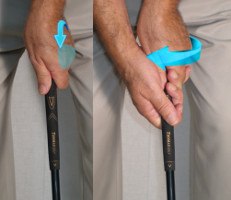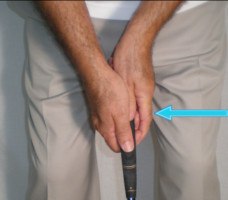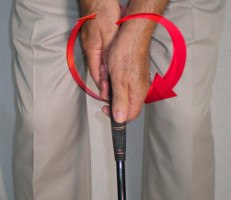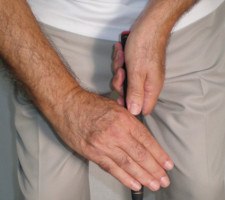|
Pros and Cons of Every Golf Grip Style |
Best Grip? Overlapping vs Interlocking |
Grip style: Interlocking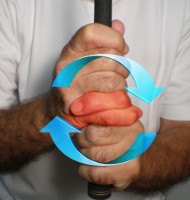 |
Hand position: strong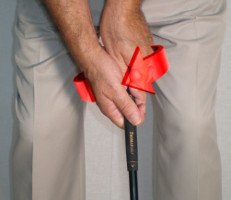 |
Putting grip style / hand position: Reverse overlap / neutral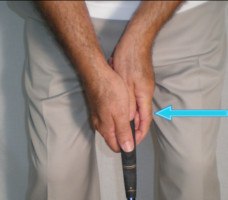 |
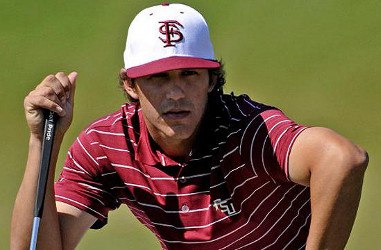
Strong and stronger. That’s Brooks Koepka’s grip in a nutshell.
Brooks who, you ask? Sorry, forgot the introduction. As of January 2015, Koepka (pronounced KEP-ka) is still a relative unknown among golf fans. That doesn’t figure to last, though, as the powerful Florida State alum is considered one of golf’s most promising young players.
Now, on to that grip. With his left hand, Koepka displays a mildly strong position – turned just far enough to his right so that the “V” between thumb and index finger aligns approximately with his right collarbone when addressing the driver.
His right hand, however, is in a considerably stronger spot. The “V” points straight up the right arm while the back of his hand aligns with the wrist; little or no “cupping” is visible.
Koepka relies on this grip to pound drives averaging well over 300 yards. He doesn’t hold back, either, telling Golf Digest, “The harder I swing, the straighter it goes.” Must be nice.
While his putting isn’t quite at the level of his long game, it’s not bad, either. Brooks Koepka’s grip with his classic, blade-style putter is beautifully relaxed. His right index finger is extended, rather than curled around the handle, with virtually no tension in his arms. He stands quite close to the ball, putting his eyes directly over the line. This is a good thing. Putting instructors teach students to align the eyes either directly above or slightly inside the ball.
Update:
Brooks Koepka, a professional golfer and multiple major championship winner, utilizes a grip that is commonly referred to as the “strong grip.” This grip is known for promoting a powerful release and generating a lot of clubhead speed. Here's how you can adopt a similar grip:
- Begin by placing your lead hand (left hand for right-handed golfers, right hand for left-handed golfers) on the club. Position the grip diagonally across the base of your fingers, so it runs from the heel pad of your hand, across the base of your fingers, and toward the first joint of your index finger.
- Make sure that your lead hand's “V” formed by the thumb and index finger points more toward your trail shoulder (right shoulder for right-handed golfers, left shoulder for left-handed golfers) or even slightly behind it.
- Once your lead hand is in position, wrap your trail hand (right hand for right-handed golfers, left hand for left-handed golfers) around the grip so that the pinky finger rests directly on top of the lead hand's index finger.
- Make sure that the trail hand's palm is facing more toward the target, giving it a strong grip appearance.
- Maintain a relaxed grip pressure, avoiding excessive tension in your hands and wrists.
It's worth noting that the strong grip, like any grip, may not suit everyone's swing style or feel comfortable for all golfers. Experimenting with different grip variations and finding what works best for you is essential. Working with a golf instructor or professional can provide personalized guidance to help you find the optimal grip for your game.
